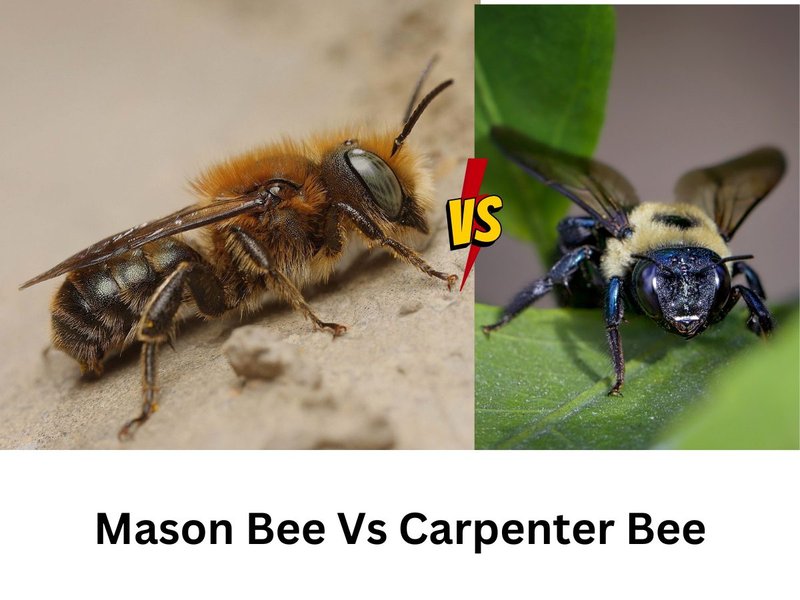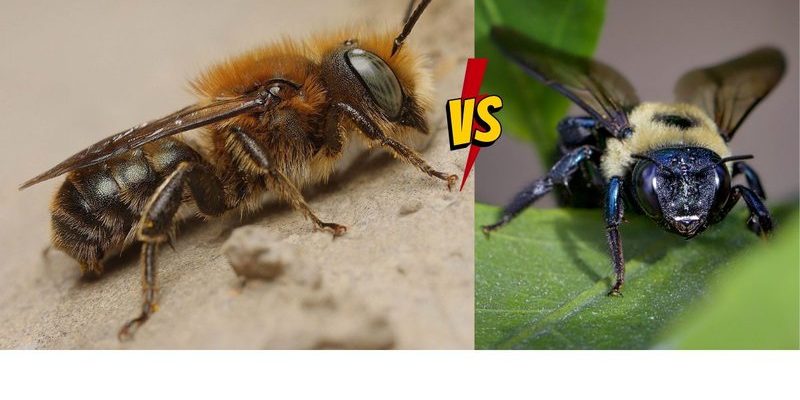
You might be wondering why it matters to differentiate between these insects. Well, understanding their behaviors, habitats, and roles in the ecosystem can help you figure out if they’re a friend or foe in your garden. Let’s unpack this together.
What Are Carpenter Bees?
Carpenter bees are often mistaken for bumblebees due to their similar size and appearance. However, there’s a catch. While bumblebees are furry and fuzzy all over, carpenter bees have a sleek, shiny abdomen that is nearly hairless. Just picture a shiny sports car next to a fluffy teddy bear; they both might look sweet, but one feels a bit more intimidating.
These bees are known for their habit of drilling into wood. Yes, you heard that right! Their strong jaws allow them to create holes in wooden structures, which they use for nesting. This behavior might make them seem like tiny woodworkers. Some people may panic upon spotting the damage they leave behind, but carpenter bees are not aggressive and usually prefer to mind their own business—much like that quiet neighbor who loves gardening.
Similar Insects: Bumblebees
Speaking of bumblebees, they are one of the primary insects you might confuse with carpenter bees. Bumblebees are fuzzy, sociable creatures that live in colonies. They play a crucial role in pollination, helping to fertilize flowers and enhance fruit production in gardens and farms.
Unlike carpenter bees, bumblebees don’t nest in wood. Instead, they often use abandoned mouse nests or other cozy places. Their fuzzy bodies are perfect for collecting pollen, making them essential to the ecosystem. So, if you see a fluffy bee buzzing around your flowers, give it a friendly wave!
Here’s a quick comparison:
- Appearance: Bumblebees are fuzzy; carpenter bees are shiny.
- Nesting: Bumblebees use pre-existing structures; carpenter bees burrow into wood.
- Social Behavior: Bumblebees live in colonies; carpenter bees are mostly solitary.
Identifying the Carpenter Bee
Identifying carpenter bees can be easier than it sounds. Besides their shiny backside, they also have a distinct black and yellow coloration. Think of them as the “bad boys” of the bee world. They have a larger size than most bees, measuring about 1 inch long.
One tip for identifying them is to look for their nesting sites. They tend to create perfectly round holes, about the size of a dime, in wood. You might find them on fences, decks, or wooden beams. Unlike termites, they don’t eat the wood; they merely use it for shelter. If you spot a bunch of these holes with sawdust around, say hello to your carpenter bee friend!
Behavior Patterns of Carpenter Bees
Now, let’s get into what carpenter bees do all day. They’re generally solitary creatures, which means they’re not busy forming big, bustling hives. Instead, each female bee makes her own nest. After she’s laid her eggs, she seals up the hole with pollen and nectar as a food source for her babies. How thoughtful!
Carpenter bees are also strong fliers. They can go up to a mile to forage for food. You might notice them hovering near flowers—both to feed and to find a mate. Their buzzing can sound a bit intimidating, but here’s the thing: they are less likely to sting than honeybees or bumblebees. They’d rather fly away than confront you.
Carpenter Bees vs. Mason Bees
Another insect to consider is the mason bee. These little guys are also important pollinators—and they’re great to have around. Unlike carpenter bees, mason bees are typically smaller and have a more robust, fuzzy appearance.
Mason bees don’t drill into wood; instead, they prefer using mud to seal their nests. You can find them in natural cavities or man-made structures like bee houses. Here’s a quick cheat sheet to help you differentiate:
- Nesting: Mason bees use mud; carpenter bees use wood.
- Appearance: Mason bees are smaller and fuzzier; carpenter bees are larger and shinier.
- Behavior: Mason bees are more social and often nest in groups; carpenter bees are solitary.
The Importance of Carpenter Bees
You might be thinking, “Do carpenter bees even matter?” Honestly, they do! While they might cause a bit of damage, they are also exceptional pollinators. They visit flowers and help with fruit and vegetable production.
Their unique nesting habits can create habitat spaces for other insects, as well. By drilling into wood, they also help break down dead trees, contributing to the ecosystem. So, while they might leave some marks on your deck, they’re also doing their part in nature’s grand design.
How to Manage Carpenter Bees
If you’re dealing with carpenter bees invading your space, here are a few tips to keep them in check:
1. Seal Entry Points: Fill in existing holes with wood putty or caulk to prevent them from nesting.
2. Use Natural Repellents: Consider using citrus oil, which many bees dislike.
3. Wood Treatments: Applying paint or varnish can make wood less appealing to them.
Remember, it’s all about coexistence. If they’re not causing major damage, perhaps it’s worth letting them buzz around your garden.
In summary, carpenter bees are unique little creatures that bring both beauty and a bit of trouble to our outdoor spaces. While they may seem intimidating with their drilling habits, they play essential roles as pollinators in our ecosystems.
Understanding the differences between carpenter bees and other similar insects, like bumblebees and mason bees, can help you appreciate their contributions. So next time you spot one buzzing around, consider the important role they play in keeping our gardens vibrant and full of life. Embrace these quirky insects, and who knows—you might just enjoy their presence!

